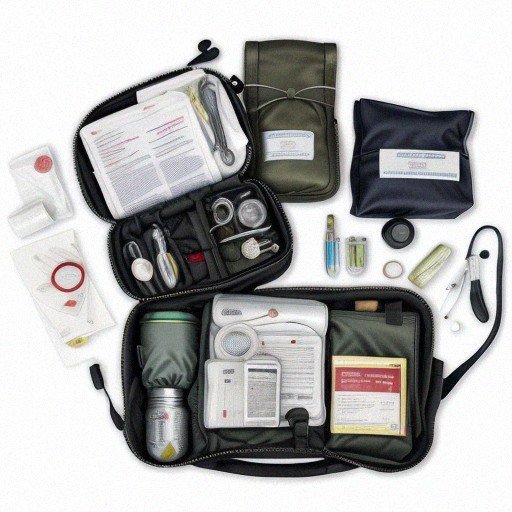The Basics of Lock Picking with a Bobby Pin: A Step-by-Step Guide
Are you curious about the world of lock picking? Have you ever wondered how to pick a lock using just a bobby pin? If so, then this is the article for you! Our step-by-step guide introduces you to the basics of lock picking with a bobby pin, so you can gain an understanding of the process and have the confidence to take on more complex projects in the future.
We’ll discuss the different components of a bobby pin, how to choose the right tool for the job, and the techniques you’ll need to know to successfully pick a lock with just a bobby pin. So, if you’re ready to learn the basics of lock picking with a bobby pin, read on!
What is a Bobby Pin?
Are you curious about the world of lock picking? Have you ever wondered how to pick a lock using just a bobby pin? If so, then this is the article for you!
A bobby pin is a type of hair accessory that is commonly used to secure hair into a variety of styles. However, bobby pins can also be used to pick locks as they possess the basic components necessary to do so.
The components of a bobby pin include a flat head, a bendable shaft, and an inner spring. The flat head is used to apply torque to the lock, while the bendable shaft can be manipulated to reach the pins inside the lock. The inner spring helps to keep the bobby pin in place, allowing for more precise movements.
When choosing a bobby pin for lock picking, it is important to select one that has a good grip. A bobby pin with a smooth finish is best, as it will provide the most control when picking the lock. Additionally, it is important to select a bobby pin that is thick enough to provide the necessary torque, but thin enough to fit into the keyway.
Once you have the right bobby pin, you will need to learn the techniques needed to successfully pick a lock with just a bobby pin. These include manipulating the pins, applying the correct torque, and feeling for the correct tension. With practice, you can master the art of lock picking with a bobby pin and have the confidence to take on more complex projects in the future.

Choosing the Right Tool for the Job
Choosing the right tool for the job is the first step towards success when it comes to lock picking. After all, having the right equipment is the key to any successful lock picking project! When it comes to lock picking with a bobby pin, the most important tool is, of course, a bobby pin.
There are two types of bobby pins to choose from: metal and plastic. Metal bobby pins are more rigid and durable, but plastic bobby pins are more flexible and easier to use. In addition to the bobby pin itself, you’ll need a small flathead screwdriver, a pair of tweezers, and a few cotton swabs.
Since the bobby pin is the most important tool, you’ll want to make sure you get one that is strong and durable, as well as one that fits comfortably in your hand. Once you have all the necessary tools, you’re ready to start your lock picking journey!
Manipulating the Bobby Pin
Are you curious about the world of lock picking? Have you ever wondered how to pick a lock using just a bobby pin? If so, then this is the article for you! Our step-by-step guide introduces you to the basics of lock picking with a bobby pin, so you can gain an understanding of the process and have the confidence to take on more complex projects in the future.
The first step to any successful lock picking is knowing the components of a bobby pin. Most bobby pins are made of two pieces of metal that are connected at the tip. The first piece is the part that is shaped like a hook and often has a small ridged tab at the end.
This piece is used to push the pins up and hold them in place while you manipulate the lock. The second piece is the straight end that is inserted into the lock to turn the cylinders.
Once you understand the components of a bobby pin, the next step is understanding the technique of manipulating the pin. To pick a lock with a bobby pin, you start by inserting the straight end into the keyhole and pushing the pins up, one at a time, with the hook end. Then, using the hook end, you turn the cylinders until the lock opens.
It’s important to remember that the pins must be pressed up in the right order or the lock won’t open. It’s also important to take your time and be gentle when manipulating the pin, as too much pressure can cause the pins to break. With practice, you should be able to learn how to pick a lock with a bobby pin relatively quickly.
By following our step-by-step guide and taking the time to practice, you can quickly learn the basics of lock picking with a bobby pin. With the knowledge gained in this article, you’ll have the confidence to take on more complex projects in the future.
Understanding the Lock Components
Lock Components is a crucial first step in the process of lock picking with a bobby pin. To get started, understand the two main components of a bobby pin: the bowed end and the straight end. The bowed end, which is usually the side of the bobby pin that has a slight bend in it, is used to apply pressure to the pins inside the lock, while the straight end is used to turn the cylinder. When selecting a bobby pin for a lock picking project, it’s important to choose one that fits the lock and is strong enough to withstand the pressure required to manipulate the pins inside.
Next, you need to understand the different techniques for using the bobby pin. The “raking” technique is the most common and involves using the bowed end to apply pressure on the pins, while the straight end is used to apply a “scrubbing” motion. This motion causes the pins to bounce up and down, which helps to open the lock. Additionally, there are other techniques, such as single pin picking and impressioning, which involve inserting the bobby pin into the lock and manipulating the pins to open the lock. Each technique requires a high level of skill and practice to master, so it’s important to take your time and be patient when learning.
Now that you understand the components of a bobby pin and the techniques used to open a lock, you can start to practice your lock picking skills. Remember to choose the right tool for the job and take the time to master the different techniques, so you can open locks with confidence. Good luck!

Inserting the Bobby Pin into the Lock
Inserting the bobby pin into the lock is the first step in the lock picking process. Knowing the correct technique is key to achieving success. Before you begin, examine the bobby pin carefully; make sure that the two ends are of equal length and that the top is smooth and straight. Bend the thicker end of the bobby pin into an ‘L’ shape. This will give you more control and leverage when inserting the pin into the lock.
Now hold the bobby pin firmly in your dominant hand and insert it into the keyhole. Gently twist the bobby pin until it is at a 45-degree angle, then press and push it in further. You should feel the pins inside the lock start to move slightly. To ensure that the pins are in the correct position, gently pull the bobby pin upwards. You will now be able to begin moving the pins to the correct position, which will allow the lock to open.
Remember that practice makes perfect, so don’t be discouraged if you don’t get it right the first time. If you have the patience and the time, practice these techniques to perfect your lock picking skills and you will be able to pick a lock with just a bobby pin in no time.
Using the Bobby Pin to Feel the Lock’s Components
The head of the bobby pin is the widest part of the tool and has a flat end. This end can be used to push down the pins in the lock. The stem of the bobby pin is narrower and pointed so it can fit into the keyhole of the lock and be manipulated to move the pins inside. The bow of a bobby pin is the curved section that is used to push down the pins in the lock, and is also the most important part of the bobby pin when picking a lock.
When selecting the right bobby pin for lock picking, it’s important to choose a pin that is strong and able to withstand the forces of picking a lock. A pin that is too thick or too thin can be difficult to manipulate and can cause damage to the lock.
Additionally, it’s important to ensure that the bow of the pin is straight and can fit into the keyhole of the lock. A bowed pin can cause difficulties in manipulating the pins in the lock and can lead to a failed attempt at picking.
Once you’ve selected the right bobby pin for the job, it’s time to learn the techniques for picking a lock with a bobby pin. To begin, you’ll need to insert the bobby pin into the keyhole, then use the bow of the pin to push down on the pins within the lock.
As you press down on the pins, you’ll need to turn the bobby pin in a clockwise or counterclockwise motion in order to move the pins until they are all aligned and the lock opens. With practice and patience, you should be able to gain the skills necessary to pick a lock with a bobby pin.
Setting the Tumblers
The process of “Setting the Tumblers” is the first step in picking a lock with a bobby pin. This involves manipulating the pins inside the lock so that they are all aligned in the same position and the lock is ready to be opened.
To do this, you first need to identify the pins inside the lock. Most locks will have two different types of pins, a driver pin and a key pin. The driver pin is the larger of the two and is the first pin to be manipulated. The key pin is the smaller of the two and the last to be manipulated.
Next, insert your bobby pin into the keyhole and apply gentle pressure. This will separate the pins and allow you to move them individually. To manipulate the driver pin, press it inwards gently with the tip of your bobby pin.
This will cause it to move slightly, allowing you to move the key pin. Once you have moved the key pin, you will need to move both pins back to the same position, ensuring that the driver pin is flush against the shell of the lock. If done correctly, the lock should now be ready to be opened.
With practice, you will be able to master the technique of setting the tumblers. This is a fundamental skill of lock picking and is the basis of any successful lock picking attempt. Understanding the process of setting the tumblers will make you more confident in your lock picking skills and allow you to take on more complex projects in the future.
Using the Bobby Pin to Lift the Plug
Lock picking is a popular technique for opening a lock without a key, and the bobby pin is one of the most popular tools used for this purpose. Bobby pins are made of a strong and durable metal, and they come in a variety of sizes and shapes. To choose the right bobby pin for lock picking, you’ll want to look for pins that are not too large or too small, and have a short and curved tip.
Once you’ve chosen the right bobby pin, you’re ready to begin the process of picking the lock. The basic idea is to use the tip of the bobby pin to push up the pins of the lock until they reach the shear line. This is done by pressing the bobby pin into the bottom of the keyway, then lifting it up and turning the bobby pin slightly while applying pressure to the pins. Once the pins reach the shear line, the lock will open.
It may take some practice to perfect this technique, but with patience and practice, you’ll eventually be able to pick a lock with just a bobby pin. Once you have the basics down, you can move on to more complex lock picking techniques, such as raking, bumping, and bypassing. With the right tools and techniques, you can become an expert lock picker in no time!
Retrieving the Bobby Pin Once the Lock is Open
Once you have successfully opened the lock with your bobby pin, it is important to be sure to remove the pin from the lock as soon as possible. This is especially important if you are reusing the same bobby pin for multiple locks. After removing the bobby pin, be sure to inspect the pin for any signs of damage or wear. If you notice any issues, it may be best to replace the bobby pin before attempting to pick any other locks with it.
Additionally, it is also important to remember to store your bobby pin in a safe place, such as a drawer, box, or tool bag. This will help ensure that your bobby pin will be in the right condition when you need it. Storing it in a secure location will also help prevent someone else from using it with malicious intentions.
With the right precautions, you can successfully use a bobby pin to pick a lock. With the right technique and practice, you can even become an expert in no time. Knowing how to pick a lock with a bobby pin is a useful skill, so be sure to take the time to become proficient at it.
Practicing Your Lock Picking Skills
To begin your journey into the world of lock picking, you must first understand the different components of a bobby pin. A standard bobby pin consists of two metal pieces: a longer, thinner shaft, and a shorter, thicker base. The shaft is used to insert the pin into the lock and the base is used to apply pressure or tension to the pins inside the lock. It’s important to use the right type of bobby pin for the job, as certain types may be too thick or too thin to properly fit into the lock.
Once you have chosen a bobby pin that is the right size for the lock, it’s time to start picking. To do this, you must apply tension to the pins inside the lock, while simultaneously manipulating the shaft of the bobby pin. This process takes patience, practice, and precision, as it is easy to cause damage to the lock or bobby pin if you are not careful. As you practice, you will become more familiar with the feel of the pins and begin to understand how to apply the right amount of tension, allowing the lock to open.
With enough practice, you will eventually learn to pick a lock with just a bobby pin. The feeling of success when you finally open the lock is an incredible reward and marks the beginning of an exciting journey into the world of lock picking.
Common Mistakes to Avoid
However, before you get started, it’s important to keep in mind that picking a lock with a bobby pin can be tricky. It takes practice and patience to master the skill, so it’s important to be aware of the common mistakes people make to avoid frustration and possible damage.
The first mistake people often make when trying to pick a lock with a bobby pin is using the wrong type of bobby pin. Bobby pins are available in a variety of sizes and shapes, and the type of bobby pin you use will depend on the type of lock you’re trying to pick. For example, a smaller bobby pin may be better suited for a lock with a narrow or shallow keyway, while a larger bobby pin may be better suited for a lock with a wider or deeper keyway. It’s important to choose the right size and shape of bobby pin for the job to ensure success.
The second mistake people make is not having the proper technique. It’s important to understand the process of lock picking and the techniques you’ll need to use to successfully pick a lock with a bobby pin. This means having the right grip, applying the correct amount of tension, and using the correct picking technique for the type of lock you’re trying to pick. If you don’t have the proper technique, you may find yourself struggling to pick the lock and causing unnecessary damage to the pins inside the lock.
By avoiding these common mistakes, you can ensure a successful lock picking experience and master the skill of lock picking with a bobby pin.
Accessing Locks with Different Shapes and Sizes
When it comes to lock picking, bobby pins are one of the most versatile tools available. Whether you’re dealing with a pin and tumbler lock, wafer lock, or even a tubular lock, a bobby pin can help you get through. To pick a lock with a bobby pin, you’ll need to understand the various components of a bobby pin and how they function together.
The first component of a bobby pin is the head. This is the end of the pin that’s pointed towards the lock. It serves as a way to apply pressure and manipulate the lock in order to open it. The second component is the body of the pin. This is the part you’ll be working with when picking a lock. It’s important to choose a pin that’s the right size and shape for the job. A bobby pin with a longer body length will give you more control while picking.
Once you have the right bobby pin for the job, the next step is to understand the techniques necessary to successfully open a lock. This includes learning how to apply tension, manipulate the pins, and feel for when the lock opens. With practice, patience, and a little bit of luck, you’ll be able to gain the skills necessary to pick locks of all shapes and sizes with a bobby pin.
Troubleshooting Lock Picking Issues
Troubleshooting lock picking issues can be a bit overwhelming. You may come across several common problems when trying to pick a lock with a bobby pin. The most common issue is that the pin does not seem to fit the lock.
This can be caused by a few things, such as the pin not being the right size or not being the right shape. Additionally, if the pin is too thick, it can make it difficult to insert into the lock. To troubleshoot this problem, you’ll want to make sure you’re using the right size pin for the lock. You may also need to switch to a different type of pin, such as a flat or a curved pin, depending on the shape of the lock.
Another common issue is that the lock does not seem to be opening. This could be due to a number of reasons, such as not applying enough pressure to the pins or not having the right angle when inserting the pin.
To troubleshoot this problem, you’ll want to make sure you’re holding the bobby pin at the right angle, as well as applying the right amount of pressure to the pins. Additionally, you may want to try different techniques, such as wiggling the pins or feeling for tension to identify any issues. With these tips, you can easily troubleshoot lock picking issues and ensure you get the best results every time.
Other Lock Picking Techniques
In addition to using a bobby pin to pick a lock, there are many other techniques available to the aspiring lock picker.
One method is known as “shimming,” which involves using a thin plastic or metal strip to create an opening in the lock. This technique generally works best on padlocks as it is fairly easy to find a shim that fits perfectly into the lock’s keyhole.
Another popular technique is known as “rake and tumbler picking,” which involves manipulating the pins inside the lock in order to create an opening. This requires the use of special lock picking tools, such as a tension wrench, pick gun, and rake.
Finally, another technique is known as “impressioning,” which involves making a mold of a key and using it to open the lock. This is a more advanced technique and requires the use of a precision grinding tool and a blank key.
In conclusion, when it comes to lock picking there are a variety of techniques available for aspiring lock pickers. While bobby pin lock picking is a great way to get started, it is important to understand the other options available.
By understanding the different tools and techniques, you can become a more well-rounded lock picker and have the confidence to take on more complex projects in the future.
Safety Tips for Lock Picking
Are you curious about the world of lock picking? Have you ever wondered how to pick a lock using just a bobby pin? If so, then this is the article for you! Our step-by-step guide introduces you to the basics of lock picking with a bobby pin, so you can gain an understanding of the process and have the confidence to take on more complex projects in the future.
When working with a bobby pin, it is important to ensure you have the right type of bobby pin for the job. Choose a bobby pin that is long enough to reach the lock’s pins, with a sturdy end that won’t bend or break. You should also make sure to use the proper technique when picking the lock. Start by inserting the bobby pin into the lock and applying tension. You can then move the pin up and down to manipulate the pins until the lock opens.
Safety should always be a concern when lock picking. Never attempt to pick a lock that you do not have permission to access. Additionally, make sure to be conscious of your surroundings so that you are not putting yourself in danger. If you’re careful and follow these safety tips, you can have a successful and enjoyable lock picking experience.







